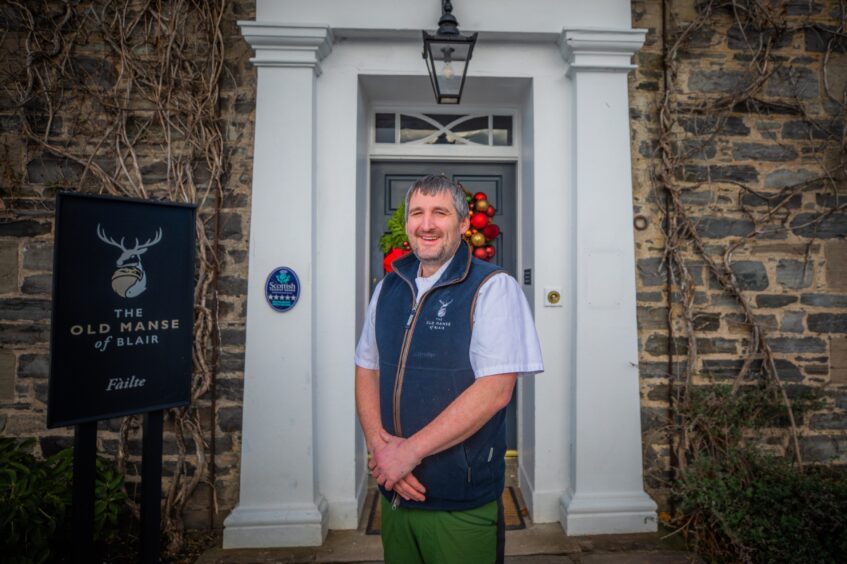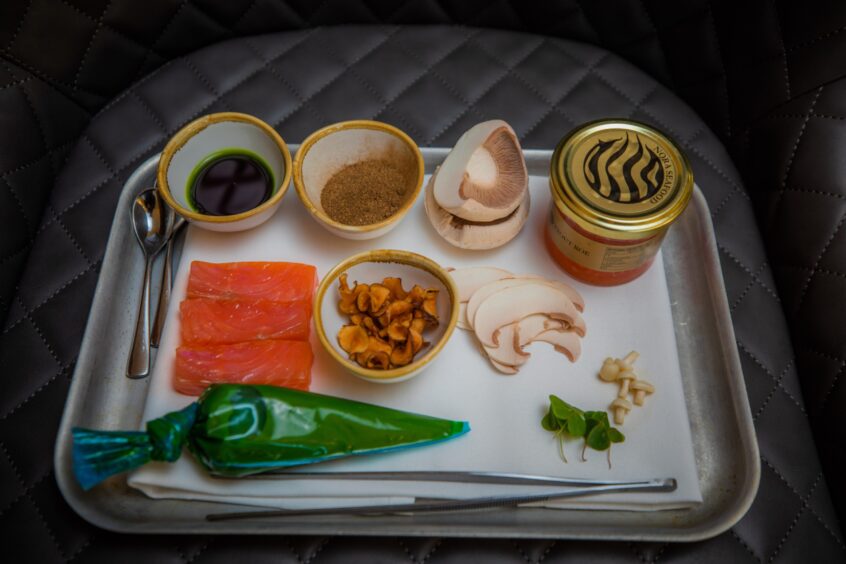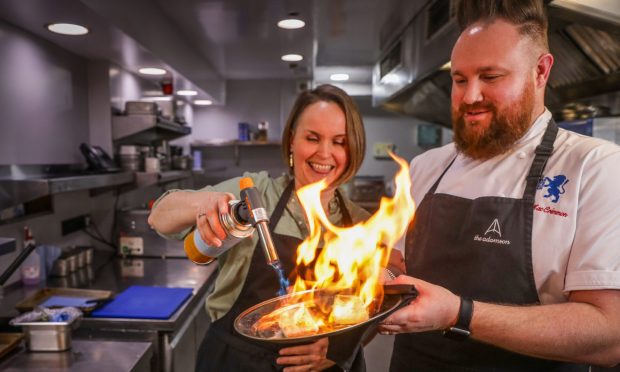After nearly a decade at the helm of the iconic Three Chimneys on Skye, award-winning chef Scott Davies has embarked on an exciting new adventure at The Old Manse of Blair.
Just a few months ago, he took the reins as executive head chef at the five-star boutique hotel and restaurant, The Orangery, in Blair Atholl.
And with the Old Manse featuring in the 2025 issue of The Michelin Guide for Great Britain and Ireland, I’d put good money on Scott’s new venture becoming the Scotland’s next top foodie destination.
I stopped in at the luxurious country house hotel to hear about his plans and sample one of his dishes with a couple of surprising twists.
Scott Davies’s approach to cuisine is deeply rooted in the concept of terroir – the idea that food should reflect the unique characteristics of its environment.
His cooking celebrates Scotland’s natural larder, drawing from its abundant seasonal produce.
Foraging plays a central role in his philosophy, with Scott incorporating wild ingredients like mushrooms, seaweed, and herbs to capture the essence of the landscape in every dish.
Sustainability is also at the heart of his craft and his knowledge of food history and techniques to get the best out of seemingly inedible produce is mind-blowing.
What are we eating today?
The centrepiece of today’s dish is a rainbow trout, one of my favourites, caught by Scott’s father in Angus and cold smoked to coax out a soft, delicate flavour.
It’s a beautifully prepared fish, already glowing with promise, but Davies elevates it to art. Razor-thin raw chestnut mushroom slices are meticulously tweezed onto the trout, while vibrant pearls of trout caviar glimmer like tiny jewels.
As if that weren’t enough, Scott scatters tiny pickled mushrooms for a pop of acidity, crisp Jerusalem artichoke slices for a playful crunch, and delicate wood sorrel leaves that introduce a cleansing, apple-like tang.
And a sprinkle of dried cep powder to heighten the earthy tones.
Christmas mayonnaise!
Then comes the pièce de résistance: what I call ‘Christmas tree mayo’.
A brilliantly festive creation that combines pine oil made with Douglas fir and parsley with egg yolk, Dijon mustard and sea salt.
The dish is a feast for the eyes as much as the palate, a vibrant mosaic of textures and colours that’s almost too pretty to touch. Almost.
A single forkful delivers silky fish that melts on the tongue, while the caviar pops with briny intensity.
The fried artichokes add crunch, the fir and mushrooms bring earthiness, and the sorrel leaves cleanse the palate with their refreshing tang.
It’s the perfect bite – so perfect that I immediately need another, and another.
Pouring tea on top?
But then Scott ups the ante. “It’s time to pour the forest tea,” he announces with a grin, producing a teapot filled with an aromatic broth.
Here’s where things get theatrical.
The forest tea, made from Perthshire-grown green tea, is infused with dried mushrooms, larch, Douglas fir and dashi powder.
A concoction that looked like something my daughter might make in her garden mud kitchen.
As Scott pours the steaming liquid over the dish, it is transformed into an aromatic stew.
The smell alone is intoxicating, and Scott insists I try a sip of the forest tea on its own.
How does the forest tea taste?
It’s unexpectedly delightful. Earthy, savoury, and with a warmth that feels like it’s doing good things for your body and soul.
Before I know it, I’ve drained the glass and eagerly turn my attention back to the trout, now steeping in this rich, tea-infused bath.
The combination of the smoky fish and the umami-packed tea provides a harmonious blend of land and sea.
Scott’s inventiveness is impressive.
The pine oil adds an elegant touch of forest freshness, tying the dish back to its woodland inspiration.
Telling Scotland’s story through food
This isn’t just a meal – it’s storytelling on a plate, where every ingredient has a role in a tale of rivers, forests and festive cheer..
From the local trout to the foraged mushrooms and surprising addition of Douglas fir, every element speaks to a profound connection with Scotland’s natural bounty.
It’s a dish that feels as fresh as a Highland stream and as cosy as a crackling fire in winter.
Every detail, from the tea ritual to the meticulous arrangement of ingredients, reflects his passion for blending the familiar with the unexpected.
Read more chef’s stories and local restaurant reviews here



















Conversation